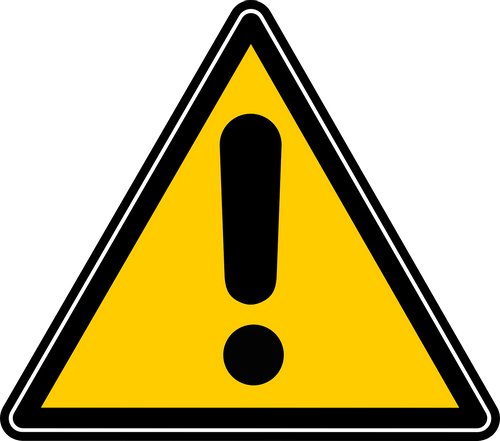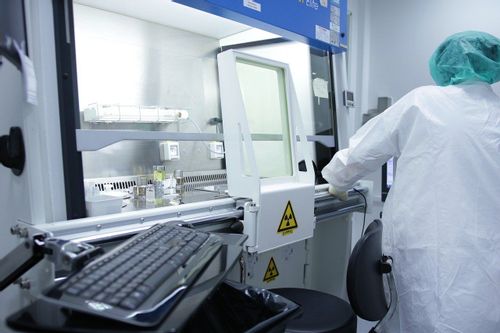Standards Packages
iTeh together with SIST has developed and compiled a comprehensive collection of standard packages to support your standard requirements. Our packages cover an array of content that includes quality management, risk management, road vehicles, machine safety, and much more. With over 200 packages to choose from, you are sure to find a collection to suit your standard needs.
Latest Standards
This European Standard specifies requirements, testing, marking and manufacturer’s instructions and information for sit harnesses to be used in restraint, work positioning and rope access systems, where a low point of attachment is required. Sit harnesses are not suitable to be used for fall arrest purposes.
- Standard24 pagesEnglish languagesale 10% offe-Library read for1 day
- Draft23 pagesEnglish languagesale 10% offe-Library read for1 day
This European standard specifies a method for the differentiated determination of the organic carbon content (TOC400) which is released at temperatures up to 400 °C, the residual oxidizable carbon (ROC) (including e.g. lignite (brown coal), hard coal, charcoal, black carbon, soot) and the inorganic carbon (TIC900) which is released at temperatures up to 900 °C.
The basis is the dry combustion to CO2 in a in the presence of oxygen using using temperatures ranging from 150°C to 900 °C in dry solid samples of soil, soil with anthropogenic admixtures and solid waste (see Table 1) with carbon contents of more than 1 g per kg (0,1 % C) (per carbon type in the test portion).
- Standard31 pagesEnglish languagesale 10% offe-Library read for1 day
- Draft20 pagesEnglish languagesale 10% offe-Library read for1 day
- Draft29 pagesEnglish languagesale 10% offe-Library read for1 day
This European Standard describes a method for determining the homogeneity of primers for cold and hot applied joint sealants.
- Standard5 pagesEnglish languagesale 10% offe-Library read for1 day
- Draft5 pagesEnglish languagesale 10% offe-Library read for1 day
ISO 4641:2016 specifies the minimum requirements for textile-reinforced, smooth-bore rubber water-suction and discharge hoses and hose assemblies.
Three types of hoses and hose assemblies are specified according to their operating duty requirements, i.e. their ambient and water temperature ranges:
- ambient temperatures: −25 °C to +70 °C;
- water temperatures during operation: 0 °C to +70 °C.
- Standard17 pagesEnglish languagesale 10% offe-Library read for1 day
- Draft15 pagesEnglish languagesale 10% offe-Library read for1 day
This document describes a method for determining the flow resistance of hot applied joint sealants.
- Standard10 pagesEnglish languagesale 10% offe-Library read for1 day
- Draft9 pagesEnglish languagesale 10% offe-Library read for1 day
This document specifies a volumetric method for the determination of silver on a material considered homogeneous. The silver content of the sample lies preferably between (100 and 999,0) parts per thousand (‰) by mass. Fineness above 999,0 ‰ can be determined using a spectroscopy method by difference (e.g. ISO 15096).
This method is intended to be used as the reference method for the determination of fineness in alloys covered by ISO 9202.
- Standard12 pagesEnglish languagesale 10% offe-Library read for1 day
- Draft9 pagesEnglish languagesale 10% offe-Library read for1 day
Meaningful measurements that lead to timely learning, corrective actions and improvements are key to support the management of innovation activities in an organization to ensure its survival and beneficial evolution (i.e. enhanced competitiveness for businesses and/or enhanced effectiveness and relevance for public-oriented organizations).
This proposed Tools and Methods standard is complementary to the ISO56002 Innovation Management System standard. It will provide guidance for the definition, implementation, evaluation and further improvement of the measurements necessary to manage effectively innovation operations in an organization.
Specifically, this standard will guide:
- The planning for the alignment of innovation measurements to the organization’s strategy, operational objectives and innovation management system;
- The selection of indicators to measure the progress of innovation activities and performance of the innovation portfolio.
- The design of ways to measure each indicator (via quantitative or qualitative metrics) in a clear and actionable way;
- The choice of frequency and expected performance targets for innovation measurements;
- The provision of necessary support to undertake innovation measurements efficiently and manage their evolution: funding, people, infrastructure, legal aspects, documentation and communications;
- The evaluation of measurement results, taking corrective action, learning and communicating;
- The review and update of the organization’s innovation measurements in terms of effectiveness in achieving intended innovation results and minimizing risks.
The guidelines to innovation measurements provided by this standard will be useful for all types of organizations (irrespective of sector and size) and all types of innovations (independent of time horizons).
This standard provides guidance at a general level. While it gives some examples of measurements in use, it does not prescribe any specific tools, methods for innovation measurements or metrics.
- Standard85 pagesEnglish languagesale 10% offe-Library read for1 day
- Draft67 pagesEnglish languagesale 10% offe-Library read for1 day
This document specifies a method for the determination of the bond stress of dowels in concrete pavements.
- Standard11 pagesEnglish languagesale 10% offe-Library read for1 day
- Draft10 pagesEnglish languagesale 10% offe-Library read for1 day
This European Standard describes a method for determining the solids content and the evaporation behaviour of volatiles of primers for cold and hot applied joint sealants.
- Standard7 pagesEnglish languagesale 10% offe-Library read for1 day
- Draft7 pagesEnglish languagesale 10% offe-Library read for1 day
This European Standard describes a method for determining the resistance against alkali of primers for cold and hot applied joint sealants.
- Standard7 pagesEnglish languagesale 10% offe-Library read for1 day
- Draft7 pagesEnglish languagesale 10% offe-Library read for1 day
This document specifies requirements for surface preparation, materials, application, inspection and testing of internal coating lining systems that are intended to be applied on internal surfaces of steel storage tanks of crude oil, hydrocarbons and water for corrosion protection. It covers both new construction and maintenance works of tank internal coating and lining as well as the repair of defective and deteriorated coating/lining. This document also provides requirements for shop performance testing of the coated/lined samples and the criteria for their approval.
- Standard35 pagesEnglish languagesale 15% off
- Standard39 pagesFrench languagesale 15% off
- Draft35 pagesEnglish languagesale 15% off
- Draft35 pagesEnglish languagesale 15% off
This document establishes the specifications relative to family C (gears) for lubricants, industrial oils and related products of class L (see ISO 6743-6). This document deals only with lubricants for enclosed gear systems. Lubricants for open gears and greases for gears (enclosed or open) are covered by the other parts of the ISO 12925 series (i.e. ISO 12925-2 and ISO 12925-3). This document is intended to be read in conjunction with ISO 6743-6. The following categories specified in ISO 6743-6 are covered by this document: CKB, CKC, CKD, CKE, CKSMP, CKTG, CKES, CKPG, CKPR, CSPG, CSPR, CTPG and CTPR. Detailed information about the different types of gear, and lubricants, and their selection for gearbox design and service conditions can be found in ISO/TR 18792.
- Standard37 pagesEnglish languagesale 15% off
- Standard49 pagesFrench languagesale 15% off
- Draft34 pagesEnglish languagesale 15% off
- Draft34 pagesEnglish languagesale 15% off
This document provides general considerations to support the design guidance to geotechnical and civil engineers involved in the design of structures in which a geotextile is used to fulfil the function of an asphalt interlayer. The key potential failure mechanisms and design aspects to be considered are described, and guidance is proposed to select engineering properties. The state of the art is however limited and does not commend any particular design method. This document can be used as a basis for further research on, for example, system selection, design, performance testing, creation of local guidelines.
- Technical report23 pagesEnglish languagesale 15% off
- Draft24 pagesEnglish languagesale 15% off
- Draft24 pagesEnglish languagesale 15% off
This document establishes uniform requirements and test procedures for lowering control devices fitted on the boom, intermediate boom and arm cylinders of hydraulic excavators and backhoe loaders to control the rate of drop in the case of a hydraulic line failure or rupture. It is applicable to the lowering control devices of hydraulic excavators and the backhoe equipment of backhoe loaders used for object handling which are equipped with the standard linkage as defined by the manufacturer. On machines where alternative linkage combinations are offered, only the standard length defined by the manufacturer is subject to testing.
- Standard10 pagesEnglish languagesale 15% off
- Standard11 pagesFrench languagesale 15% off
- Draft10 pagesEnglish languagesale 15% off
- Draft10 pagesEnglish languagesale 15% off
This document specifies the minimum requirements for rubber hoses and hose assemblies for use in oil burners. The following two types of hose assembly are specified: — Type 1: Hose assemblies for flux and reflux, but not for insertion between the oil burner pump and the atomizing connection; maximum working pressure 1,0 MPa (10 bar); maximum oil temperature 100 °C; — Type 2: Hose assemblies for insertion between the oil burner pump and the atomizing connection; maximum working pressure 4,0 MPa (40 bar); maximum oil temperature 100 °C. The hose assemblies specified in this document are not intended to be used, without special assessment, for purposes other than oil burner installations.
- Standard14 pagesEnglish languagesale 15% off
- Standard14 pagesFrench languagesale 15% off
- Draft14 pagesEnglish languagesale 15% off
- Draft14 pagesEnglish languagesale 15% off
This document specifies the requirements for the determination of the power of electric marine propulsion systems when presented for documenting and checking of the declared (rated) power published by the manufacturer. This document is applicable to electric systems used for propulsion of recreational craft and other small craft of up to 24 m of hull length.
- Standard5 pagesEnglish languagesale 15% off
- Standard5 pagesFrench languagesale 15% off
- Draft6 pagesEnglish languagesale 15% off
- Draft6 pagesEnglish languagesale 15% off
This document specifies the dimensions of hexagonal head bolts, with MJ threads, metallic, coated or uncoated. It is applicable to test bolts for torque and tension tests.
- Standard5 pagesEnglish languagesale 15% off
- Draft5 pagesEnglish languagesale 15% off
- Draft5 pagesEnglish languagesale 15% off
This document is part of the ISO 11890 series, dealing with the sampling and testing of coating materials and their raw materials. This document is applicable to the determination of volatile organic compound (VOC) content in the following cases: — case 1: where there are single-pack coating materials other than case 3, and the expected VOC content is greater than a mass fraction of 5 %, including single-pack coating materials cure not through chemical reactions and single-pack coating materials which cannot be measured by ISO 11890-2 due to chemical cure reactions or gas chromatography temperatures leading to formation of new compounds that would not appear under normal cure conditions and impacts VOC/SVOC calculation.; — case 2: where there are multi-pack coating materials other than case 3 and the expected VOC content is greater than a mass fraction of 1 %; — case 3: where there are radiation curable coating materials, and the expected VOC content is greater than a mass fraction of 5 %. Radiation curable coating materials in this document include coating materials that are cured by UV, electron beam, and other radiation methods. If the system of the first case contains SVOC, but do not cure through chemical reactions, the VOC result can be influenced by SVOC, see Annex C. In this case, ISO 11890-2 is preferred. ISO 11890-1 cannot be used for the determination of the SVOC content. In water-borne coating materials, that do not cure through chemical reactions, if the water content is much greater than VOC content and VOC content is less than a mass fraction of 10 %, ISO 11890-2 is preferred. For all three cases, the main purpose measured is VOC. However, clarify that this VOC content can also contain SVOC. The real VOC content can be lower than the VOC content measured by ISO 11890-1. The method specified in this document assumes that the volatile matter is either water or organic. However, it is possible that other volatile inorganic compounds are present which can require another suitable method for quantification, which is thus allowed for in the calculations. The method defined in this document is not applicable for determination of water content.
- Standard15 pagesEnglish languagesale 15% off
- Standard15 pagesFrench languagesale 15% off
- Draft15 pagesEnglish languagesale 15% off
- Draft15 pagesEnglish languagesale 15% off
This document establishes a uniform method of laboratory testing for the determination of airflow propelled through an open personnel door by a positive pressure ventilator. NOTE The test described by this document is not entirely in accordance with ISO 5801, though it references several subclauses of ISO 5801 (such as the measurement of pressure and airflow). This document does not specify a testing procedure for the design, production or field test of any PPV, nor is it the purpose for this document to serve as a manual for the construction, validation or calibration of the test facility. This document does not apply to any item of equipment designed or intended for applications other than positive pressure ventilation.
- Standard11 pagesEnglish languagesale 15% off
- Standard10 pagesFrench languagesale 15% off
- Draft10 pagesEnglish languagesale 15% off
- Draft10 pagesEnglish languagesale 15% off
This document specifies an analytical method for the electrochemical measurement of pure plutonium nitrate solutions of nuclear grade, with an expanded uncertainty not exceeding ±0,2 % at the confidence level of 0,95 for a single determination (coverage factor, k = 2). The method is applicable for aqueous solutions containing plutonium at more than 0,5 g/l and test samples containing plutonium between 4 mg and 15 mg. Application of this technique to solutions containing plutonium at less than 0,5 g/l and test samples containing plutonium at less than 4 mg requires experimental demonstration by the user that applicable data quality objectives will be met.
- Standard30 pagesEnglish languagesale 15% off
- Draft30 pagesEnglish languagesale 15% off
- Draft30 pagesEnglish languagesale 15% off
Benefits

Full Standards Solution
Our catalog includes not only latest standards but also full meta information about related standardization project lifecycle.

Cost Effective
Our PRICE MATCH GUARANTEE policy with multi-level volume discounts gives our clients the best option in the market. In addition, you can get access to the standards for 3, 10, or 30 days.

Stay Notified
Get alerted to the latest revisions and new standards in the Weekly Newsletter. Standards are constantly changing. Don’t miss a revision that can impact your business.
6 Reasons Why We are The BEST at What We Do
Compliance with international standards is increasingly becoming one of the key competitive advantages in the global market. Our company creates all conditions for the most comfortable implementation of new documents and norms in the processes carried out by your organization. Some of the key advantages of working with us are:
- Cost-effective - multi-level discounts and permanent updates of the functions give our clients the best option on the market.
- e-Library - access to standards for a period of time of your choice. It is a cost-effective solution for keeping updated with the newest standards.
- Company-wide documents - create a company account and connect all employees with access to purchased standards, e-Library documents, and packages.
- All in one spot - all purchased standards are kept in one place with controlled access by the account administrator.
- Client-centric - providing quality consulting is the prerogative and incentive to create new products that accompany your success and scale.
- 24 / 7 client support
We are dedicated to building mutually beneficial and long-term relationships with our clients. That is why our team focuses on creating services to help our customers develop and achieve new productive results.
About Us
iTeh Inc is a software development and IT consulting team of professionals who provide consulting, development and implementation of solutions for all types of businesses.
In cooperation, with the Slovenian Institute of Standardization (SIST), we create a unique solution that covers all aspects of the lifecycle of Standardization organizations. iTeh Standards is a part of the solution that helps SIST to provide and sell their products to Customers.
iTeh Standards Store is an evolving project, our goal is to build long-term relationships with our customers. We believe in delivering quality services to solve our customers' challenges and define success by exceeding our customers' expectations. We are always ready to listen and our experience allows us to provide our customers with helpful effective suggestions. You can contact us by email.
We are committed to providing the best possible experience for our customers.
























